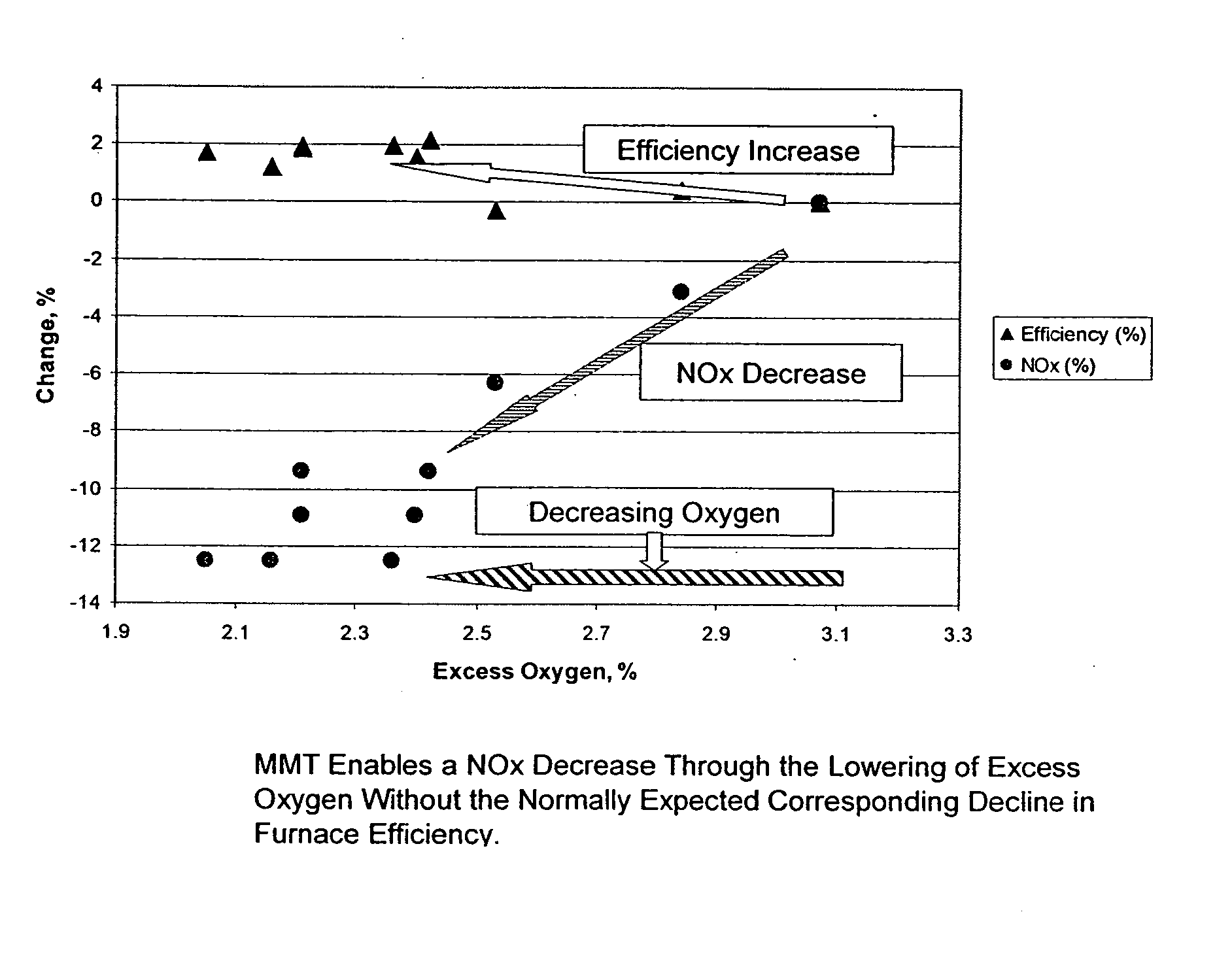Additive-induced control of NOx emissions in a coal burning utility furnace
a technology of nox emissions and additives, which is applied in the direction of combustion types, combustion processes, combustion using catalytic materials, etc., can solve the problems of increasing nox emissions, reducing combustion stability, and increasing nox emissions, so as to reduce nox emissions, reduce nox emissions, and reduce nox emissions.
- Summary
- Abstract
- Description
- Claims
- Application Information
AI Technical Summary
Benefits of technology
Problems solved by technology
Method used
Image
Examples
example
[0026] The data in Table 1 was obtained from a commercial utility furnace unit used to make steam for generating electricity. The unit is a Wall-Fired Babcock and Wilcox Boiler that operates on coal. The coal burned was Fola coal, see FIG. 2.
[0027] The furnace is equipped with 12 low-NOx burners, but is not capable of operating overfire air. The peak power output is 80-MW. The NOx %, Efficiency %, and Load %, data in Table 1 are normalized with regard to “Base” values obtained without additive, and that is why they show a zero value in the row titled “Base”.
TABLE 1Percent Changes in NOx, and Furnace Thermal Efficiency, withMMT Applied to the Coal, as Excess Oxygen is LoweredActualExcessO2, %NOx (%)Efficiency (%)Load (%)Air (%)Base3.0700011.54Additive2.84−3.10.431.0510.68Additive2.53−6.3−0.270.799.51Additive2.42−9.42.170.669.1Additive2.21−10.91.870.798.31Additive2.21−9.41.940.528.31Additive2.05−12.51.710.667.71Additive2.16−12.51.230.668.12Additive2.36−12.51.950.668.87Additive2.4−1...
PUM
| Property | Measurement | Unit |
|---|---|---|
| particle sizes | aaaaa | aaaaa |
| size distribution | aaaaa | aaaaa |
| thermal efficiency | aaaaa | aaaaa |
Abstract
Description
Claims
Application Information
 Login to View More
Login to View More - R&D
- Intellectual Property
- Life Sciences
- Materials
- Tech Scout
- Unparalleled Data Quality
- Higher Quality Content
- 60% Fewer Hallucinations
Browse by: Latest US Patents, China's latest patents, Technical Efficacy Thesaurus, Application Domain, Technology Topic, Popular Technical Reports.
© 2025 PatSnap. All rights reserved.Legal|Privacy policy|Modern Slavery Act Transparency Statement|Sitemap|About US| Contact US: help@patsnap.com



